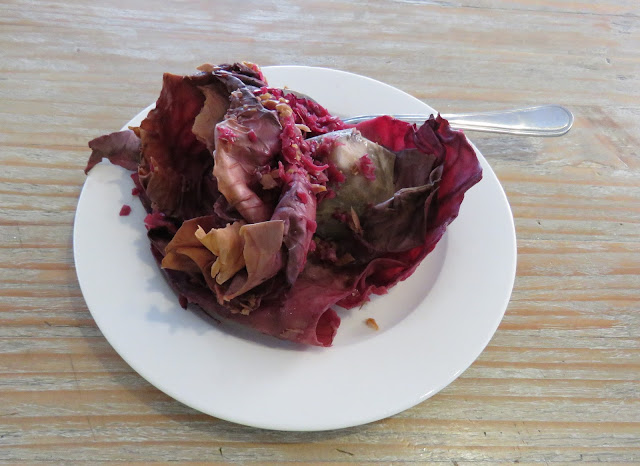Sauerkraut is ridiculously simple to make. It takes a small amount of manual labour and some patience, but the actual method is very very easy. And extremely cheap to make too. It's become a household staple in our home, so having homemade sauerkraut available all of the time is great.
Sauerkraut has many health benefits as it contains natural probiotic bacteria and digestive enzymes. The commercial sauerkraut is often made with vinegar, rather than following a natural fermentation process (which is where all of the benefits come from).
Ingredients:
1 medium cabbage (red or green)
1 tablespoon of natural sea salt (not iodised table salt)
The salt which you use is important. Try to use a natural salt without added iodine or anti-caking agents. I would recommend Himalayan / seas salt / Khoisan.
Remove the outer leaves from the cabbage and set them aside (you will need them later, so try not to tear them off). Cut out the centre core and keep this aside too.
Then, grate the cabbage, slice it finely or chop it roughly in a food processor. I did the easy option and used my food processor for this one.
Place the grated cabbage in a large bowl and wear an apron for this next part. Using a potato masher or another kitchen implement, pummel the cabbage until it softens and a liquid starts to form.
Pack the cabbage into a sterilised glass jar and press it down firmly so that most of the air spaces disappear and a layer of liquid rises to the top. Important to leave quite a large gap at the top of the jar so that the fermentation process can occur and you don't have overflow of liquid and gas.
Rinse the extra cabbage leaves (from the first step) and place them on top of the cabbage mixture. This will act as a protection from air and prevent spoiling. Place the inner core on top of that to act as a weight. A small glass jar would also work for this.
Seal the jar with a lid and let it rest in your pantry for 2 to 6 weeks. The fermentation time will depend on the weather. 2 weeks in warm summer weather. Remove the lid daily to allow the excess gas to be released. You'll be amazed how much gas the sauerkraut generates!
After it has fermented, remove the core and the leaves covering the top and discard any mouldy bits or browned cabbage. There should be very little of this.
Store the sauerkraut in the refrigerator and ensure that you always use a clean spoon to dish up the sauerkraut. It should last for ages.







